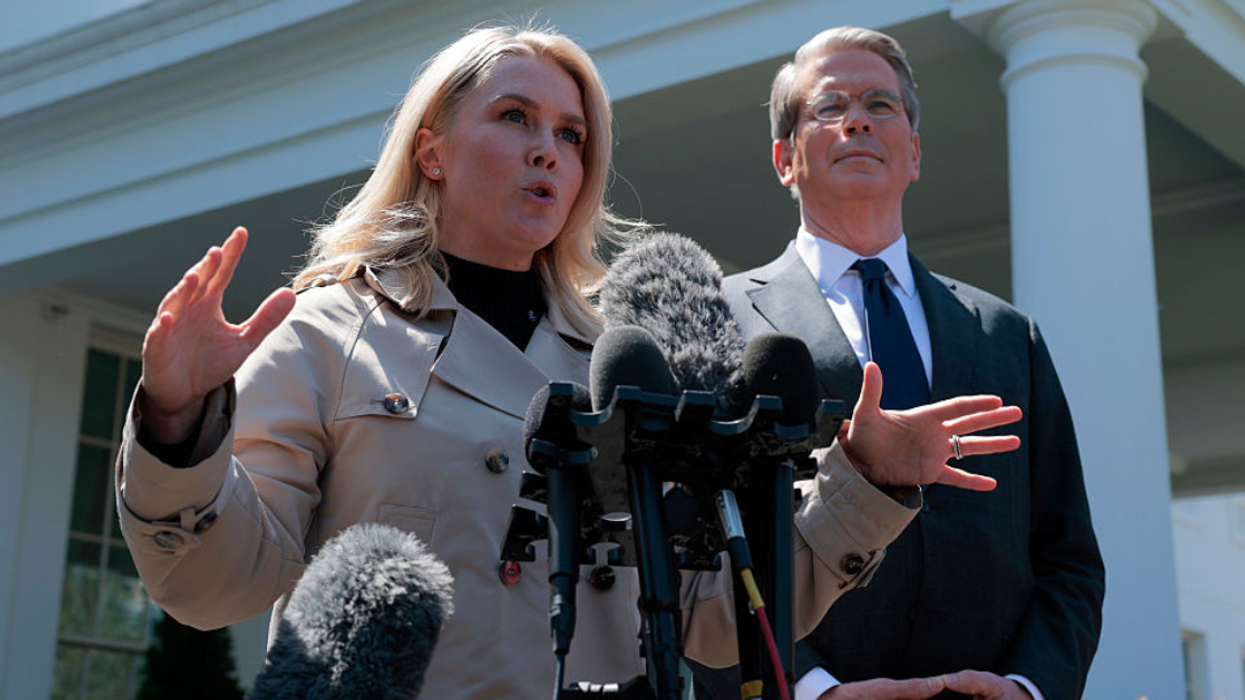ABC News learned that U.S. intelligence officials warned about a deadly contagion spreading around China's Hubei region as far back as November.
The military's National Center for Medical Intelligence (NCMI) had documented concerns about the contagion threatening the region's population, according to two officials familiar with the contents of the document.
The NCMI is a component of the Defense Intelligence Agency (DIA) and their mission is to monitor and assess global health events that could negatively impact the health of the U.S. military and civilians.
November's NCMI report compiled from wire and computer intercepts and satellite images raised alarm because the spreading virus – which we now know is responsible for the pandemic – would pose a serious threat to U.S. forces in Asia that rely heavily on NCMI's work.
If true, it means the American government had all the information and warnings necessary to prepare for the onslaught to come, well in advance.
The NCMI report – which is accessible to people who are authorized to intelligence community alerts – said of the aggressive contagion:
"Analysts concluded it could be a cataclysmic event."
A source said that the Defense Intelligence Agency, the Pentagon's Joint Staff and the White House were briefed on the out of control disease "multiple times."
Since the initial warning in November and through much of December, several briefings concerning the problem took place for policy-makers and decision-makers across the federal government as well as the National Security Council at the White House.
In January, information on the viral threat finally made its way onto the President's Daily Brief – a process of vetting and analysis that could take several weeks.
A source said of the preliminary reports coming out of Wuhan, the capital of Central China's Hubei province:
"The timeline of the intel side of this may be further back than we're discussing."
"But this was definitely being briefed beginning at the end of November as something the military needed to take a posture on."
The analysis also indicated that China's leadership was aware of the viral threat and kept the information from foreign governments and public health agencies.
Former Deputy Assistant Defense Secretary Mick Mulroy said:
"It would be a significant alarm that would have been set off by this."
"And it would have been something that would be followed up by literally every intelligence-collection agency."
Mulroy added:
"Medical intelligence takes into account all source information -- imagery intelligence, human intelligence, signals intelligence."
"Then there's analysis by people who know those specific areas. So for something like this to have come out, it has been reviewed by experts in the field."
"They're taking together what those pieces of information mean and then looking at the potential for an international health crisis."
On Wednesday, however, the Pentagon denied being cognizant of the "product/assessment."
The Defense Department provided a statement from Col. R. Shane Day, Director of the NCMI, following the ABC News report.
"As a matter of practice the National Center for Medical Intelligence does not comment publicly on specific intelligence matters."
"However, in the interest of transparency during this current public health crisis, we can confirm that media reporting about the existence/release of a National Center for Medical Intelligence Coronavirus-related product/assessment in November of 2019 is not correct. No such NCMI product exists."
The Trump Administration was widely panned for undermining the level of threat from the novel virus back in January.
In response to CNBC's question on January 22 if there would be concerns of a pandemic, Donald Trump said:
"No. Not at all. And we have it totally under control. It's one person coming in from China, and we have it under control. It's going to be just fine."
As of Wednesday, 400,000 Americans have tested positive for the virus and there have been nearly 13,000 deaths.
The book Pandemic 1918: Eyewitness Accounts from the Greatest Medical Holocaust in Modern History is available here.
















